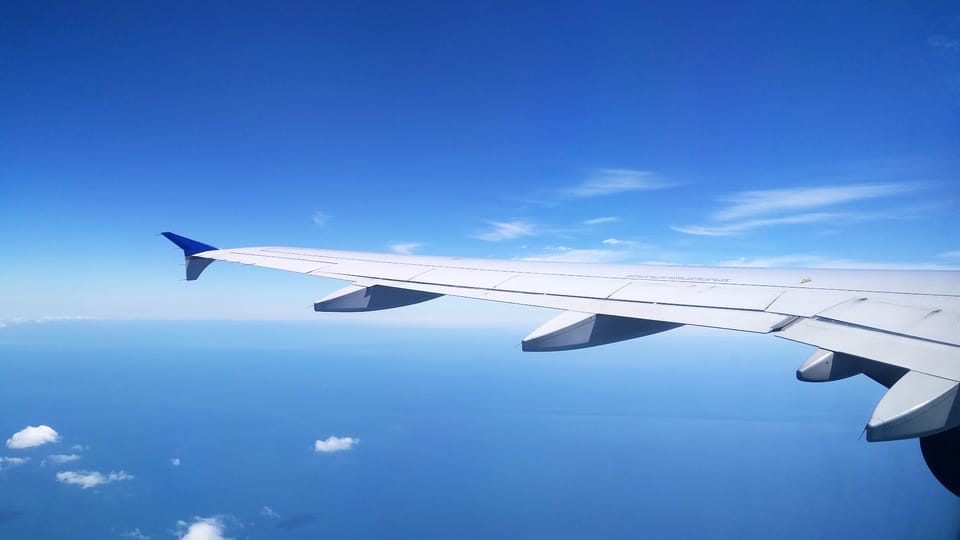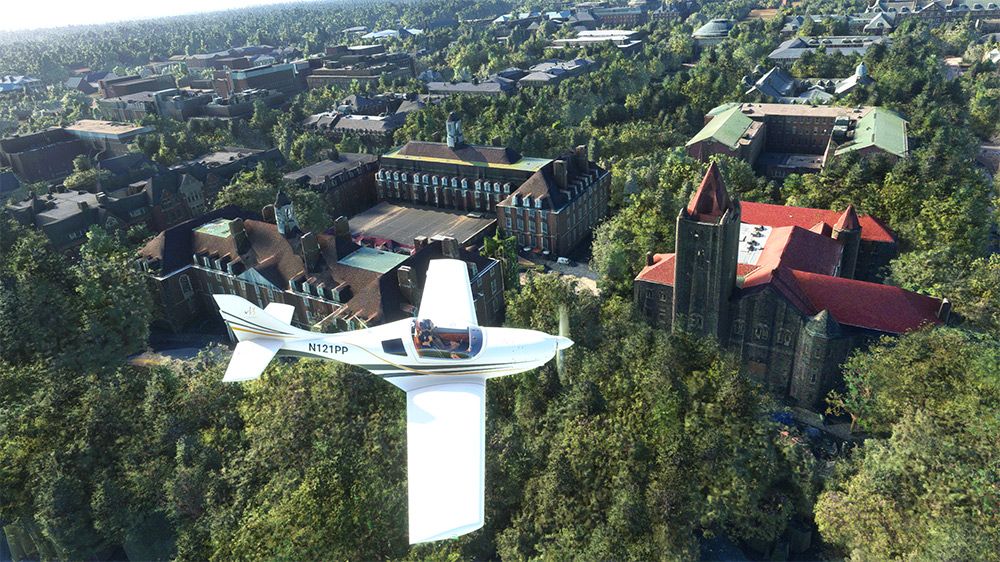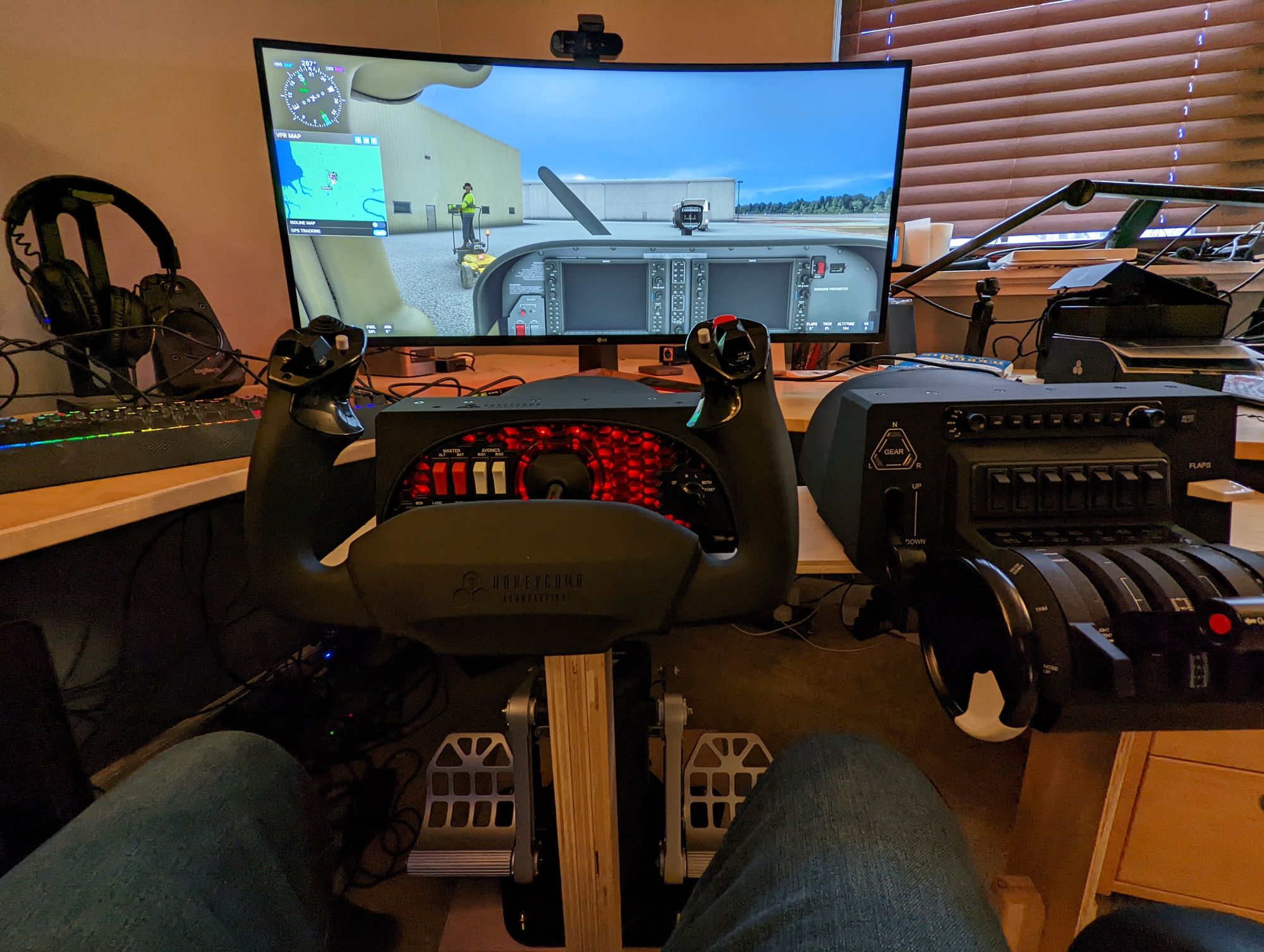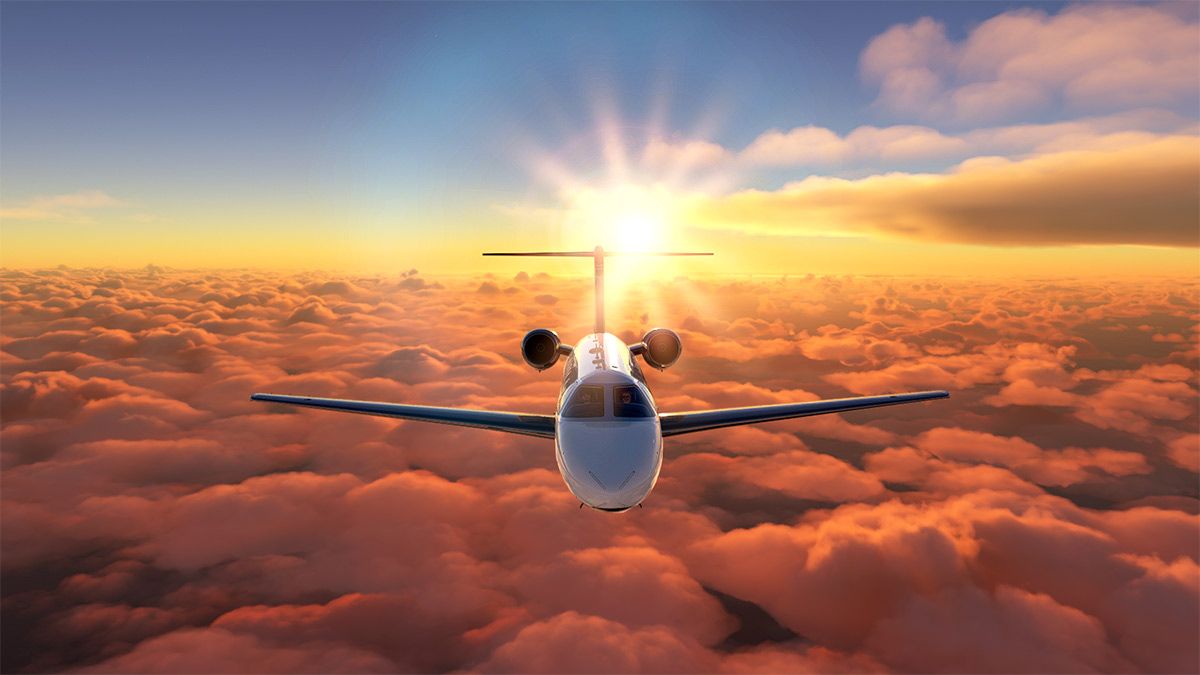
Getting Serious(er) About Flight
Flying planes has always been a dream of mine.
To adventure. To exist in a cloud. To chase a rainbow. To marvel at the machinery of invention. To reminisce of the pioneers who took to the skies with inferior technology and daring bravado. To be reminded of the power of science to not only educate by conquer.
There is risk. Awe. Freedom. Camaraderie. But there is also technology. Simple physics. Complex physics. Data. When your interests run broader than deep, these multifaceted topics always carry an allure.
All romance aside, it is still a dream, and one I've not pursued with any real determination.
I love things that fly. I never tire of sticking cameras on RC planes or drones and experiencing the world from above. I've been playing flight sims since the early 90s, enamored by the idea of staring through a windshield instead of a tiny passenger window. In college, I tried to convince my parents to pay for flight lessons. They laughed dismissively (which was totally fair).
By my mid 20s, I was married and working full time, and the desire to fly waned, suppressed like so many other endeavors I didn't have the bandwidth (or means) to pursue. Then kids came along, and the resulting sense of responsibility meant an even greater suppression of potentially high risk activities.
Now, flying isn't necessarily high risk. Unless, of course, you're flying with a wing suit and jet packs. But thousands of pilots fly smaller craft every day without incident. It is, as I understand, an exercise in practice and discipline, of calculation and understanding. Nevertheless, it's higher risk than sitting on the couch watching Wings.
Recently, I, like so many others, spent hours of Covid lock down exploring the world in the latest version of Microsoft's Flight Simulator. It employs maps and procedurally generated environments to bring every part of the world to life with real time weather, real world flight traffic, and other real human players soaring with you above the clouds. To be honest, I wasn't using it as a simulator so much as a game. I broke every FAA rule. I buzzed the Eiffel Tower. I landed in Wrigley Field. I rolled down the side of a Pyramid in Egypt. But I also flew above my daughter's dorm across the country and waved as though she could see me. I visited my old apartment in New Jersey. I landed on the Quad at the University of Illinois where I once played frisbee between classes.

But I've also done a little homework. Over the years, I've read about flight physics and lift. I've researched proper landing techniques, the use of flaps, the counterintuitive idea that throttle controls altitude while pitch controls speed.
And there, lurking in the back of my mind, is always that dream of flying for real, that curiosity to know instead of wonder, to do instead of dream.
A college teammate of mine recently earned his private pilot license, and I've been amazed and impressed by the solo flights he's posted on Instagram. Gave me an itch to inch closer.
I'm not ready to commit yet, but I'm getting a little more serious. This past week, I graduated from a joystick and keyboard to a full fledged yoke, throttle quadrant, (see on Amazon*) and set of rudder pedals (see on Amazon*). The equipment is expensive, but flying with rudder pedals is a totally different experience than flying with a z-axis joystick.

This weekend I flew multiple flights. From Champaign, IL to O'Hare. From Aspen to Denver (fyi... 15,000 foot mountain peaks are a scary thing in a Cessna 172 with a max ceiling of 14,000ft). At the encouragement of an old friend, I began each flight parked at the airport instead of the simulator's default "Ready to Fly" setup on the runway. I fire up the the avionics, crank the engines, navigate the taxiways, and repeat upon arrival at my destination. It's an entirely new sense of accomplishment.
Anyway, as I advance further, I may introduce a Flight Videos segment where I document my progress. Could be fun, and I like accomplishing two things at once. Stay tuned. Hopefully, this is the start of a whole new adventure.
To end, here's a section from the introduction to Stick and Rudder by Wolfgang Langewiesche, and it's all about imagination and understanding.
A wing is an odd thing, strangely behaved, hard to understand, tricky to handle. In many important respects, a wing's behavior is exactly contrary to common sense. On wings it is safe to be high, dangerous to be low; safe to go fast, dangerous to go slow. Generally speaking, if you want the airplane to go up, you point its nose up; but point its nose up a little too much, and you go down in a stall or a spin. In landing an airplane, to make it sink down on the runway and stay down, you move the controls much as for an extreme upward zoom. In the glide, if you want to descend more steeply, you point your airplane's nose down less steeply; if you want to descend less steeply, you point the airplane's nose down more steeply! And-most spectacular contrariness of all-in emergencies, when the airplane is sinking toward the ground in a "mush" or falling in a stall or a spin, and you are afraid of crashing into the ground, the only way to keep it from crashing is to point its nose down and dive at the ground, as if you wanted to crash!
It is largely this contrariness of the airplane that makes flying so difficult to learn. For flying is difficult to learn-let nobody tell you otherwise... What makes flying so difficult is that the flier's instincts-that is, his most deeply established habits of mind and body-will tempt him to do exactly the wrong thing. In learning other arts that are comparable to piloting - sailing, for instance - skills, ideas, habits must be developed where there were none before. In learning the art of piloting, much carefully learned behavior, many firmly held ideas must first be forgotten and cleared out of the way, must actually be reversed!
And it is largely because of this contrariness to common sense that the conventional airplane sometimes requires "nerve" from its pilot. Again, let no one tell you that this is not so...
But another view of the problem is also possible. It may be that our common sense, our natural reactions mislead us simply because they are working on the basis of wrong ideas in our minds concerning the wing and how it really flies, the controls and what they really do. The airplane, after all, is a machine; it obeys ordinary physical law. Its behavior cannot really be contrary to common sense...
Perhaps what happens when the beginner reacts wrongly in an airplane is similar to what happened in the early days of the automobile, when a man trying to stop in an emergency would pull back on the wheel as if he had reins in his hands and would even yell "Whoa." There was nothing really wrong with his reactions, with his intentions; the only thing wrong was the image in his head that made him see the automobile as a sort of mechanized horse, to be controlled as horses are controlled. Had he clearly seen in his mind's eye the mechanical arrangement we take for granted now-the clutch that can disconnect the motor, the brakes that can clamp down on the wheels; had he clearly appreciated that the thing was a machine and had no soul at all, not even a horse's soul, and that thus there was no use in speaking to it-he would then have done the right thing without difficulty. It may be that, if we could only understand the wing clearly enough, see its working vividly enough, it would no longer seem to behave contrary to common sense; we should then expect it to behave as it does behave. We could then simply follow our impulses and "instincts." Flying is done largely with one's imagination! If one's images of the airplane are correct, one's behavior in the airplane will quite naturally and effortlessly also be correct.

*Note: Some links displayed may be affiliate links on which Kevin earns a commission. To read more about the affiliate links we're using, visit our affiliates page